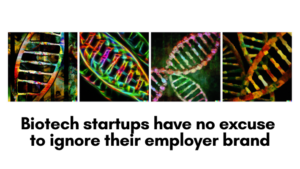
How to Dejargonize Your Scientific Experiences for Any Audience
Whether you’re talking to fellow scientists in your department, a hiring manager, or your best friend, these tips will help you not only be heard, but understood
By Akshaya Ganesh
May 2, 2023
“Could you… maybe describe that in simpler words?”
“That sounds… complicated.”
“Wait, what does that do again?”
If you have heard any version of these statements, raise your hand (I promise my hand is raised too).
As scientists, we often get lost in our heads amongst all the information we have collected. While talking about the molecular intricacies of how interferons trigger and regulate different immune pathways through upregulation of different gene pathways might be second nature to an immunologist, for example, talk about that to your non-scientist friends and their eyes will probably glaze over.
It can be difficult to break down a larger topic into smaller parts because we as subject matter experts already know how all these parts fit together. However, for effective science communication you must dejargonize your content to make it digestible, understandable, and accessible. This is incredibly useful for everything from interviews and conferences to teaching and mentoring, educational materials and much, much more.
Easier said than done, though, right? What are some strategies you can use?
First, take a deep breath. It’s a daunting task to figure out how much background information your audience needs to know to understand and appreciate your work, and even for the expert science communicators this doesn’t come easy.
Step 1. Identify your audience
Understanding the scientific background of your target audience is the first step in determining the level of detail you will need to go into, the words you use, the forms of digital aids you choose to employ, as well as the overall structure you make use of to present your work.
For example, are you presenting a thesis project to a group of scientists who have been intimately involved with your research? Or are you presenting your work at a broader conference where there are several scientists in your field, but also many that aren’t well versed with your topic of study? Or are you presenting to a group of people who aren’t scientifically inclined at all?
As you can see, there’s a diverse group of people you might discuss your work with, even in the sciences, with backgrounds that either align closely with yours or not at all. The goal at the end, however, is exactly the same. Get your message across as clearly as possible.
Let’s go back to the examples above and see how we might approach each audience.
- If you were presenting your work to scientists who know your research well, you can use diagrams with the appropriate scientific names of proteins, pathways, and structures. You don’t need to simplify many of the terms that you’re using because your audience is already familiar with what they are.
- If you were presenting your work to a conference where there’s an intermediate level of awareness on your topic, see how you can simplify certain pathways or summarize in more general terms what certain proteins do. If presenting, use indicators such as arrows or glow effects to draw attention to the main protein(s) of interest.
- If you were presenting your work to a group of individuals who don’t have a scientific background steer clear of the specifics. Using more general terminology and analogies to get your point across will help this group better understand what you are trying to convey. Very simple diagrams and other visual aids are particularly helpful when you are trying to explain a complicated topic, if the opportunity allows.
Now that you have successfully identified your audience, and have hopefully thought about what adjustments need to be made in order to effectively communicate your ideas, let’s move on to the next step.
Step 2. Break it down
Seems simple enough, right? But it’s deceptively complicated.
Just like a molecule is made of different atoms, your scientific experience is composed of different parts. A variety of techniques, theories, and principles come together to create your thesis project. What are they? Can you list them all out? What are the broad overarching categories that your project can be broken down into?
No matter your audience, break down all the main facts. Think of this as a master sheet that you can pull from based on your audience’s background.
For example: you’re investigating the expression and function of a specific protein – We’ll call it ABYZ.
- Proteins are produced by the cell to accomplish a huge variety of tasks.
- These tasks include everything from keeping the cell alive to detecting infections, such as the COVID-19 infection, and turning on your immune response.
- Proteins can be turned “on” or “off” depending on their role and what’s going on in and around the cell.
- ABYZ is a protein that can detect certain viral infections that invade cells
- Normally ABYZ isn’t turned on, but when it encounters a certain part of the virus it activates.
- Once activated, ABYZ can instruct the cell to produce other proteins that can get rid of the infection. Think of it like you witnessed a crime and called 911 for help.
- Other scientists have shown that this is a very important protein – if it doesn’t work right, you have a great chance of getting really sick from the infection.
- In my research, I’m trying to figure out how ABYZ instructs the cell to raise its defenses and attack viruses
- To do this I’m taking cells that don’t produce ABYZ and infecting them with virus. I’m then seeing how they respond in comparison to normal cells that do produce ABYZ
- So far, I’ve found that the cells that don’t make ABYZ die much quicker, and they also change shape.
You’ll see we marked some parts in bold – these are places where you can go into more specific details and jargon if you know your audience is going to understand at that level.
You should also mind the words that you’re using. For example, in addition to using the specific names of proteins or enzymes, can you describe their function in simple terms? Instead of saying “Protein ABYZ phosphorylates the transcription factor DFB to induce gene expression,” say, “ABYZ turns on another protein, which then goes to your DNA and activates a set of genes that cause certain things to happen.” The function will be more memorable to your audience than the specific name or abbreviation, especially if they’re not familiar with your work.
As mentioned above, analogies are also your friend. Not everyone knows what transcription is – instead, talk about how it’s like reading a recipe in a cookbook and making a cake. You don’t read the book from cover to cover every time – you just take the recipe that you need.
Step 3. Bring it back
Science is the study of the structure, behavior, and function of the physical and natural world. Adapt this thinking to your scientific experience – how does your research relate to the big picture?
This is something that I always appreciate when I’m listening to talks or presentations. Not everyone is well versed in what you’re researching, even if they’re a PhD scientist, so ensuring that you’re able to identify how your project fits into the grand scheme of your field guarantees that you will keep your audience’s attention even if they have very little experience in what you’re working on. Don’t save the punchline for the end, either – the more interest you can capture in the beginning, the less likely your audience will become bored.
Going back to our example, maybe your protein is important in trafficking a signaling molecule. This signaling molecule is important because it influences cell behavior, and this cell behavior is important because it helps to kill cancer cells in your body. Mention that at the beginning, and be sure to loop back to the idea as the end to tie everything together.
So the next time you have to describe your work on determining the phosphorylation of one protein that changes its conformation and allows it to bind to this other receptor and after much signaling, leads to some phenomenon – pause, take a deep breath, break down your big ideas into smaller more digestible ones, bring it back to the basics whenever you can, and don’t forget to look at the big picture.
Good luck!
- About the Author
- Latest Posts
Akshaya Ganesh is a second year PhD student at the University of Maryland studying the innate immune system and Mycobacterium tuberculosis. In her free time, she’s an avid reader, writer, foodie, and lover of all things classical music. In addition, Akshaya is passionate about science communication and making science accessible for all audiences.









